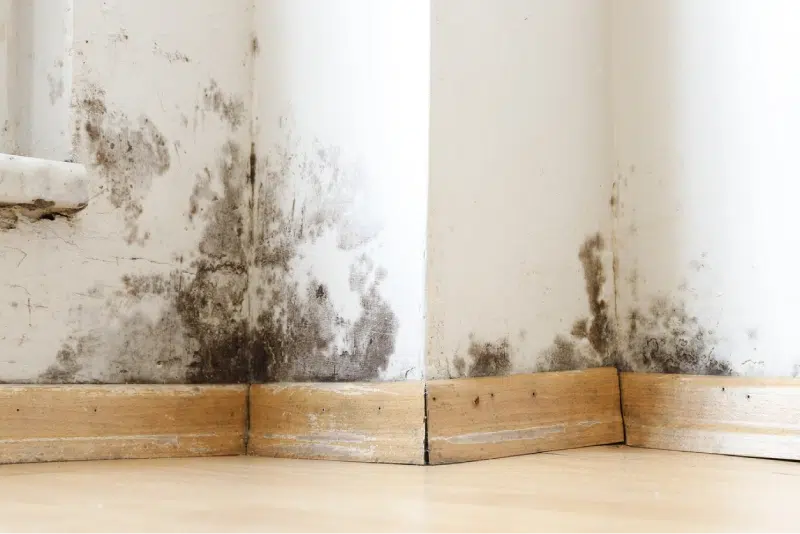Mold is Serious
Mold is a microscopic fungus that grows in almost every damp setting. Improperly maintained dwellings can have toxic mold levels. Mold infestations will flourish in areas with excess moisture, such as leaks, showers with no ventilating fans, wet basements, and air ducts. Because it only takes a day or two for colonies of mold to form, it is very hard to predict and track outbreaks. If you can see it or smell it, most likely, there is a problem. Besides being a health hazard, mold can also rapidly eat away at almost any organic material, including walls and façade.
Article 11, section 581 of the San Francisco Health Code lists mold as a “health nuisance.” It also states that the mold must be “visible or otherwise demonstrable.” Health and Safety Code section 26147 requires residential landlords who know of mold in their rental units to disclose it to tenants.
What to do when you find mold in your apartment or rental unit
When a tenant reports mold to a landlord, the landlord must take specific steps to eradicate the mold. A landlord that fails to follow the proper protocol for addressing mold in an apartment can be held liable for all the tenant’s damages, including moving costs, bodily injury, property damage, emotional distress, return of rent, and loss of the value of the apartment.
Here are steps that a landlord must take after a tenant complains of mold. Any variation from this protocol is actionable negligence on the part of the landlord.
Step 1: Hire a licensed mold expert to test the unit for airborne mold.
There are two types of tests – a swab sample and an airborne sample. A swab sample collects a small amount of visible mold to be sent to a lab for testing. An airborne sample tests for mold in the air. A proper air sample should test multiple rooms in the apartment, and especially rooms where there is visible mold or where there have been water leaks. The air test also needs to take a baseline of the outdoor mold count. There is a natural level of mold in the environment. For a positive result, the airborne mold level on the inside of the unit must be higher than the outside. Not all testers are the same. Be sure to hire someone who is licensed and experienced. To be admissible in court, the test must have been done by a qualified tester and a proper chain of custody must be shown. When reading the results, pay particular attention to toxic molds, such as cladosporium, penicillium, aspergillus, and stachybotrys. It is important for the tenant to get a blood test from an allergist to determine allergies to specific mold. An allergist will test for the very mold found in the mold report.
Step 2: Temporarily move the tenant out or contain the area where the mold was found.
After a positive mold test, a landlord must either temporarily move the tenant out or use negative containment to seal off the affected areas. If the mold is everywhere in the unit, the tenant must be temporarily moved out. This is the only safe way to eradicate a serious mold bloom. The landlord should reimburse the tenant for all costs of the displacement, including motel costs, meals out, and all other out-of-pocket costs. If the mold is only found in a discreet area of the apartment, that area can be sealed off. Mold travels in the air, so the area must be professionally sealed by a licensed mold remediation contractor. The landlord should reimburse the tenant for the temporary loss of the portion of the unit that was sealed off.
Step 3. Clean the tenant’s personal property offsite.
After temporarily removing the tenant or sealing the affected area, a landlord must then remove all the tenant’s affected personal property and have it cleaned offsite by a professional mold remediation company. The personal property should be stored in a safe and dry location until the apartment has been retested and confirmed to be free of mold. The mold expert will determine if certain items must be destroyed. The landlord is responsible for moving, cleaning, and in some cases, replacing, all moldy items.
Step 4. Find the water source and stop it.
Mold needs moisture to survive. After temporarily removing a tenant and all personal items, the landlord must hire a licensed contractor to address the source of the moisture. The most common sources of water are rain on old siding and roofing, flooding in basements and crawl spaces, rain on old windows, plumbing leaks, and leaks from other units. All water sources need to be determined and addressed.
Step 5. Eradicate the mold.
After addressing all water sources, the landlord must hire a licensed contractor to eradicate the mold. This usually requires the removal of drywall and plaster in all the affected areas, then physically removing the mold with specialized tools and cleaning agents, followed by HEPA vacuuming and air scrubbers to capture spores, and finally applying an antimicrobial solution to prevent regrowth. Bleach does not eradicate mold. Paint does not eradicate mold. Mold that has been sprayed with bleach or painted over will just grow back.
Step 6. Retest for mold.
After the contractor has eradicated the mold, patched and repainted, the unit should be tested for mold. All areas that were affected should be retested. If mold is found again, the proper mold remediation protocol was not followed, and the process must begin again.
Step 7. Move the tenant back in.
Once the mold expert determines that the unit is free from mold, the tenant can move back in. The landlord should reimburse the tenant for all losses, including all rent paid while the unit was affected by mold, all out-of-pocket costs for any displacement, and the cost to replace all damaged personal property.
Proper mold remediation is time consuming and expensive. Landlords will try to cut corners. If your landlord is not following the proper mold remediation protocol, please contact us to speak with one of our tenant rights lawyers at 415-504-2165.
Testing for Mold
For the most part, landlords are not required to test for mold in their units and the San Francisco Department of Public Health does not test for the presence of it either. Tenants can purchase home test kits, but these are not recommended. The better choice is to hire a mold inspector. Tenants must use caution in testing for toxins as courts will exclude tests not following sound scientific methodology. Geffcken v. D’Andrea, 137 Cal. App. 4th 1298 (2006). However, if a tenant informs their landlord of visible mold growth in their unit, the landlord should inspect the growth and may be required to conduct testing in certain situations.
Mold Illness
There is no scientific consensus on mold-related illness. Tenants will likely be able to recover for mold-related allergies where a landlord fails to properly remediate mold. It is more difficult to prove permanent illness caused by mold, such as permanent respiratory illness or recurring susceptibility to mold.
Be careful when cleaning up mold because when it becomes disturbed and airborne, it becomes even more hazardous. During the cleanup process, the spore counts of mold may increase ten to 10,000 times.
Tenant Legal Remedies for Mold
Tenants have many legal remedies for mold related issues. Landlords have been found liable for mold under causes of action for negligence, breach of warranty of habitability, intentional infliction of emotional distress, and nuisance. In extreme cases, a tenant who is forced to vacate their rental unit as a result of the landlord’s negligence or refusal to make repairs may be able to bring a claim for constructive eviction.
To successfully litigate mold landlord-tenant cases, however, a number of experts must be hired. All of the following might be required: microbiologists, toxicologists, ventilation experts, mold remediation experts, dermatologists, pulmonary specialists, allergists, and psychologists. In the event that you discover mold growth in your home, it is important to consult with an attorney to get information regarding your rights and your landlord’s responsibilities.





